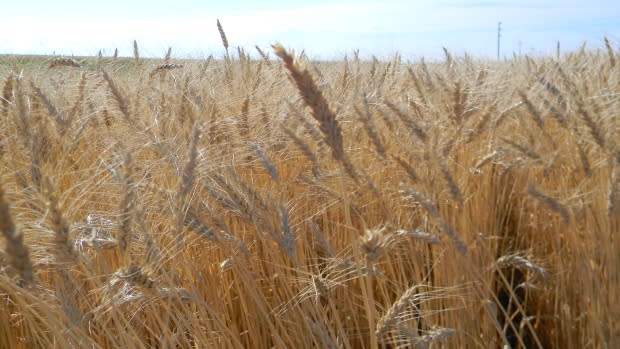'Worse than normal' winter wheat crop forces farmers to replant
Some farmers who planted winter wheat are facing a tough decision — whether to kill it off and plant a new crop in its place.
The recent winter was a difficult one, with not enough snow cover to insulate the young wheat plants, with too many freezes and thaws.
The resulting damage is "worse than normal," according to Kim Cooper, agriculture specialist for the Municipality of Chatham-Kent.
"This is certainly not an average winter wheat crop this year," said Cooper, who has heard early estimates of anywhere from 20 to 40 per cent of of the crop being no good.
A spokesperson for the Ontario Ministry of Agriculture, Food and Rural Affairs (OMAFRA), said there were approximately 387,405 hectares of winter wheat seeded last fall, according to Statistics Canada.
In 2018, 99.4 per cent of the seeded 372,028 hectares of winter wheat was harvested.
Plan B for farmers
Not all farmers are feeling the effects this spring. There are good patches of crop here and there, according to Cooper.

For those who are seeing the worst of it, they may choose to give up the winter wheat and replant something else, such as corn or soybeans, in its place.
"This is something they just deal with and they'll go to plan B. Farmers always have a plan B," said Cooper.
Some farmers can get compensation via insurance claims, according to Cooper, but not all farmers are insured. Those who are not will have to swallow the cost of the seed they planted.
Resulting price hikes
With less winter wheat being grown, Cooper said the effect would be a tightening of the supply of straw this summer.
Industries that purchase straw for things such as livestock bedding and mushroom growing compost may see prices go up.
According to the OMAFRA, there's no clear answer on how much winter wheat will be written off this year.
Some farmers may choose to "keep questionable stands," said OMAFRA, for a number of reasons.
Farmers may find value in keeping a crop rotation, or keeping up with the demand for straw, or to balance the workload as spring planting continues.

